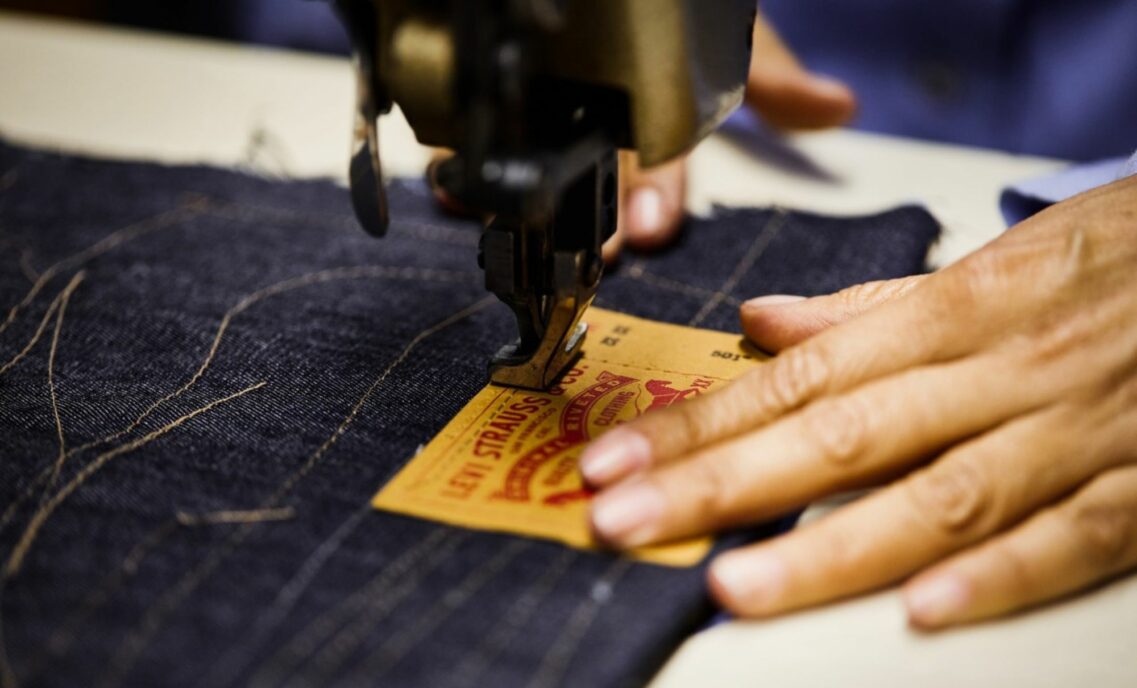LS&Co. recently released its 2021 sustainability report, a look at the progress made and ongoing ambitions across our sustainability programming. In it, we released a new slate of 16 goals in areas that together demonstrate the scope and ambition of our work in this space. We sat down with LS&Co. Chief Sustainability Office Jeffrey Hogue to talk about the goals and the work ahead.
What do you want people to take away from these goals?
First, they demonstrate that we are defining sustainability more holistically than ever before, including not just supply chain and environmental goals, but also linking to the diversity, equity and inclusion work being carried out by our terrific DE&I team, our gender and pay equity goals, and our willingness to use our voice on the most pressing issues of the day.
Second, they show how we’re putting the “three C” climate, community and consumption framework that we laid out in last year’s sustainability report into practice. These aren’t abstract concepts. These goals help codify the meaning and intent behind each pillar.
Third, we see all of this as an expression of the company’s guiding philosophy of profits through principles, something we want to convey during a key moment in the corporate sustainability conversation, when all companies have to show measurable impact over time and find ways to work together to bring scale to these efforts, especially around climate.
Some goals are set for 2025, others for 2030 or later. Why?
The complexity of our industry, with shared supply chains, means we can theoretically move more quickly in some areas — like reducing greenhouse gas emissions in our company-operated locations — while we need to partner closely with our peers and supply chain partners in others, like emissions at the factories we work with.
We want our impact to be lasting and run deep within our supply chains. And we want to achieve impact at scale. The best way to make sure that happens is to look around and make sure we’re aligned with those we operate alongside. Collaboration is critical, and it is better to be smart than to be first when it comes to creating a resilient future for our people and our planet.
Do you really believe the fashion industry can be sustainable — as opposed to, say, slightly less harmful?
The fashion industry has to be sustainable, full stop. We know it starts with us, what we can do in our business and our operations. That’s why we landed on the “three C” framework, to focus our efforts across everything we do. Doing so demonstrates our commitment to our values as a company, shows we understand how sustainability creates value for all stakeholders and helps future-proof our operations for the long term.
But no one can go it alone, especially in our industry. We need brands collaborating with each other and other partners to solve the biggest challenges we face while doing everything possible to make sure their own products and practices are as sustainable as they can possibly be. We are 100 percent committed to doing our part, to making the investments, doing the R&D, partnering with others, innovating, trying, failing and trying again to get it right. The consumer has a role to play, too, and it’s that joint responsibility — and joint opportunity — between brands and consumers that we are trying to get at with our Buy Better, Wear Longer campaign. That campaign is amazing, by the way, as is the spirit that animates it and the urgency behind it.
You can learn more about our sustainability goals in our 2021 sustainability report.







